24/7 Helpline:
(866) 899-221924/7 Helpline:
(866) 899-2219
Learn more about Eating Disorder Treatment centers in Chase County

Other Insurance Options

MVP Healthcare

ComPsych

Oxford

Access to Recovery (ATR) Voucher

Evernorth

PHCS Network

Premera

Multiplan

Covered California

Medical Mutual of Ohio

MHNNet Behavioral Health

Magellan

CareSource

American Behavioral

State Farm

Coventry Health Care

Meritain

Optima

CareFirst

Cigna








Pine Lake Behavioral Health
Pine Lake Behavioral Health, in Lincoln, Nebraska, offers mental health and addiction recovery servi...

Seekers of Serenity Place
Seekers of Serenity Place is located in Columbus, Nebraska. They provide drug and alcohol addiction ...

Omaha Treatment Center
BAART Programs Omaha West is an opioid addiction recovery center in Omaha, Nebraska. BAART's highly ...

Valley Hope of O’Neill
Valley of Hope offers drug and alcohol rehabilitation services in O'Neill, Nebraska. They help adult...

ARCH Halfway House
ARCH Halfway House is a CARF-accredited halfway house in Omaha, NE for men. Their mission centers ar...

Inroads to Recovery
Inroads to Recovery is an accredited dual diagnosis substance use disorder rehab center located in O...

BAART Programs
BAART Programs in Omaha, Nebraska, is dedicated to offering exceptional outpatient services for indi...

Associates in Counseling and Treatment
Associates in Counseling and Treatment provides specialized counseling services for individuals and ...

Heartland Family Service
Heartland Family Service is a dual-diagnosis addiction treatment center in Omaha, Nebraska. Heartlan...

NOVA Treatment Community
Nova Treatment provides substance use, mental health and co-occurring treatment services, education ...

The Bridge Nebraska
The Bridge Behavioral Health located in Lincoln, Nebraska is a professional, nationally-accredited t...

CenterPointe
CenterPointe is an accredited co-occurring drug and alcohol addiction rehab based in Omaha, NE. Thro...

Behavioral Health Specialists – Sunrise Place
Sunrise Palace is a residential mental health and drug and alcohol addiction treatment center in Nor...

CHI Health Psychiatric Associates
CHI Health Psychiatric Associates is a private rehab located in Bellevue, Nebraska. CHI Health Psych...

Great Plains Behavioral Health
Great Plains Behavioral Health is a non-profit rehab located in North Platte, NE. Great Plains Behav...

Lasting Hope Recovery Center
Lasting Hope Recovery Center is a private rehab located in Omaha, Nebraska. Lasting Hope Recovery Ce...

Bryan Medical Center West – Mental Health
The Bryan Independence Center is a drug and alcohol addiction recovery facility in Lincoln, Nebraska...

South Central Behavioral Services – Outpatient
South Central Behavioral Services (SCBS) is a Community Behavioral Health agency providing mental he...

Chee Woy Na Zhee – Halfway House
Chee Woy Na Zhee – Halfway House is a public rehab located in Winnebago, Nebraska. Chee Woy Na Zhee ...

Changes For Life Evaluation
Changes For Life Evaluation is a private rehab located in Lincoln, Nebraska. Changes For Life Evalua...

Lutheran Family Services – Internacional Center of Heartland
Lutheran Family Services of Nebraska expresses God’s love for all people by providing quality human ...

Riverwood Group Omaha Treatment Center
Riverwood Group Omaha Treatment Center is a private rehab located in Omaha, Nebraska. Riverwood Grou...

Recovery Center
Recovery Center is a private rehab located in Lincoln, Nebraska. Recovery Center specializes in the ...

Stephen Center
Stephen Center is a private rehab located in Omaha, Nebraska. Stephen Center specializes in the trea...

Teen Challenge of the Midlands – Crisis
Teen Challenge of the Midlands- Crisis offers gender-specific, faith-based addiction treatment in Om...

Mid Plains Center for Behavioral Health
Mid Plains Center for Behavioral Health is a private rehab located in Grand Island, NE. Mid Plains C...

Touchstone – P Street
The Touchstone P Street facility stands as an addiction rehab center in Lincoln, NE for individuals ...

Mary Lanning Healthcare – Behavioral Services
Mary Lanning Healthcare – Behavioral Services is a private rehab located in Hastings, Nebraska. Mary...

Lincoln Treatment Center
Lincoln Treatment Center is a dedicated substance abuse treatment rehab in Lincoln, NE. Part of the ...

Northpoint Nebraska
Northpoint Nebraska is an accredited drug and alcohol addiction treatment center in Omaha, NE. It pr...

Lutheran Family Services – North Omaha for Healthy Families
Lutheran Family Services of Nebraska expresses God’s love for all people by providing quality human ...

Lutheran Family Services
Lutheran Family Services, located in Omaha, Nebraska, provides addiction treatment to men and women ...

The Bridge – South Kansas Street
The Bridge provides a holistic substance abuse recovery program for women and their families in a sa...

Blue Valley Behavioral Health
Blue Valley Behavioral Health is an outpatient treatment facility that provides behavioral health se...

The Link Halfway House
The Link Halfway House is for men who have successfully completed short term residential treatment f...

Ponca Tribe of Nebraska – Counseling
Ponca Tribe of Nebraska – Counseling is a public rehab located in Lincoln, Nebraska. Ponca Tribe of ...

Mental and Behavioral Health
Mental and Behavioral Health is a private rehab located in Columbus, Nebraska. Mental and Behavioral...

First Step Recovery Center
First Step Recovery Center stands as an accredited substance abuse treatment rehab in Lincoln, NE. T...

Saint Monica’s Behavioral Health Services
Saint Monica's Behavioral Health Services is a non-profit rehab located in Lincoln, NE. Saint Monica...

Behavioral Health Specialists
Behavioral Health Specialists - Sunrise Place is a personalized alcohol and drug treatment program o...

Offutt Air Force Base – Alcohol and Drug Treatment
Offutt Air Force Base – Alcohol and Drug Treatment is a public rehab located in Bellevue, Nebraska. ...

Blue Valley Behavioral Health
Blue Valley Behavioral Health is an outpatient treatment facility that provides behavioral health se...

Diversion Services
Diversion Services is a private rehab located in Omaha, Nebraska. Diversion Services specializes in ...

Lutheran Family Services – Children Services Center
Lutheran Family Services of Nebraska expresses God's love for all people by providing quality human ...

Nebraska Urban Indian Health Treatment Center
Nebraska Urban Indian Health Treatment Center is a public rehab located in Omaha, Nebraska. Nebraska...

Lutheran Family Services – Rupert Dunklau Center for Healthy Families
Lutheran Family Services – Rupert Dunklau Center for Healthy Families is a private rehab located in ...

Rehabilitation Partners
Rehabilitation Partners is a private rehab located in Omaha, Nebraska. Rehabilitation Partners speci...

Heartland Counseling
Heartland Counseling is a public rehab located in Ogallala, Nebraska. Heartland Counseling specializ...

Friendship House
Friendship House program provides care and support for the recovering alcoholic and drug addict by e...

Blue Valley Behavioral Health
Blue Valley Behavioral Health is an outpatient treatment facility that provides behavioral health se...

Arbor Family Counseling
Arbor Family Counseling is a private rehab located in Omaha, Nebraska. Arbor Family Counseling speci...

South Central Behavioral Services – Assertive Community Treatment
South Central Behavioral Services -Assertive Community Treatment is a Community Behavioral Health ag...

Ponca Tribe of Nebraska – Wellness Center
Ponca Tribe of Nebraska – Wellness Center is a private rehab located in Omaha, Nebraska. Ponca Tribe...

Blue Valley Behavioral Health
Blue Valley Behavioral Health, located in Lincoln, Nebraska, offers behavioral health and alcohol an...

Blue Valley Behavioral Health
Blue Valley Behavioral Health is an outpatient treatment facility that provides behavioral health se...

Friendship House – Outpatient
Friendship House - Outpatient counseling offers services to begin meeting the needs of their increas...

Friendship Program
Friendship Program is a non-profit rehab located in Omaha, Nebraska. Friendship Program specializes ...

South Central Behavioral Services – Unity House
South Central Behavioral Services - Unity House is a structured setting where an individual can prac...

Oxford House Linden Square
Oxford House Linden Square is a non-profit house located in Fremont, NE. Oxford House Linden Square ...

Oasis Counseling International
Oasis Counseling International exists to offer a safe place for weary travelers to pause, reflect an...

Lutheran Family Services
Lutheran Family Services of Nebraska expresses God’s love for all people by providing quality human ...

Revive Ministries – Horizon Recovery and Counseling
Revive Ministries - Horizon Recovery and Counseling is a private, counseling clinic located in Hasti...

Siena/Francis House – Miracles
Siena/Francis House–Miracles offers emergency shelter, crisis intervention, and no cost, inpatient, ...

Pathways Counseling Center
Pathways Counseling Center is an outpatient rehab located in Omaha, NE. Pathways Counseling Center s...

Twelve and Twelve Club – 13th Street
Twelve and Twelve Club – 13th Street is a non-profit rehab located in Columbus, Nebraska. Twelve and...

South Central Behavioral Services – Opportunity House
South Central Behavioral Services - Opportunity House offers behavioral healthcare and mental health...

Nebraska Mental Health Centers
Nebraska Mental Health Centers stands as a reputable behavioral health rehab center in Lincoln, NE. ...

Heartland Counseling Services – West Douglas Street
Heartland Counseling Services - West Douglas Street is a non-profit who provides mental health and s...

Twelve and Twelve Club
Twelve and Twelve Club is a non-profit rehab located in Columbus, Nebraska. Twelve and Twelve Club s...

CHI Health Psychiatric Associates
CHI Health Psychiatric Associates is a private rehab located in Papillion, Nebraska. CHI Health Psyc...

New Tomorrows Counseling
New Tomorrows Counseling is a private rehab located in Omaha, Nebraska. New Tomorrows Counseling spe...

Family First Counseling Center
Family First Counseling Center is a private rehab located in York, Nebraska. Family First Counseling...

Sundance Rehabilitation
Sundance Rehabilitation is a private rehab located in Omaha, Nebraska. Sundance Rehabilitation speci...

South Central Behavioral Services – Outpatient
South Central Behavioral Services (SCBS) is a Community Behavioral Health agency providing mental he...

Oasis Counseling International
Oasis Counseling International exists to offer a safe place for weary travelers to pause, reflect an...

Region II Human Services
Region II Human Services is a public rehab located in Lexington, Nebraska. Region II Human Services ...

Valley Hope of Omaha
Conveniently located in southeastern Omaha, Valley Hope provides co-occurring intensive outpatient t...

Heartland Counseling Services
Heartland Counseling Services is a non-profit who provides mental health and substance abuse service...

Lutheran Family Services – North Omaha Behavioral Health
Lutheran Family Services of Nebraska expresses God's love for all people by providing quality human ...

CHI Health Psychiatric Associates
CHI Health Psychiatric Associates is a private rehab located in Omaha, Nebraska. CHI Health Psychiat...

Blue Valley Behavioral Health
Blue Valley Behavioral Health is an outpatient treatment facility that provides behavioral health se...

Santa Monica House
Santa Monica House was the first halfway house in Omaha, Nebraska designed exclusively for women. Sa...

Compassion in Action
Compassion in Action is a non-profit rehab located in null, null. Compassion in Action specializes i...

Lincoln Behavioral Health Center
Lincoln Behavioral Health Center in Lincoln, NE offers substance abuse treatment to individuals and ...

Lutheran Family Services – Connections Building
Lutheran Family Services of Nebraska expresses God's love for all people by providing quality human ...

Parallels
Parallels is a private counseling clinic located in Lincoln , Nebraska. Parallels specialize in the ...

Lutheran Family Services
Lutheran Family Services is a private rehab located in Bellevue, Nebraska. Lutheran Family Services ...

Blue Valley Behavioral Health
Blue Valley Behavioral Health is an outpatient treatment facility that provides behavioral health se...

Blue Valley Behavioral Health
Blue Valley Behavioral Health is an outpatient treatment facility that provides behavioral health se...

Capstone Behavioral Health
Capstone Behavioral Health is a private rehab located in Omaha, Nebraska. Capstone Behavioral Health...

Lutheran Family Services – Clifford L. Johnson Center for Healthy Families
Lutheran Family Services – Clifford L. Johnson Center for Healthy Families is a private rehab locate...

Heartland Counseling Services
Heartland Counseling Services - East Zero Street is a non-profit who provides mental health and subs...

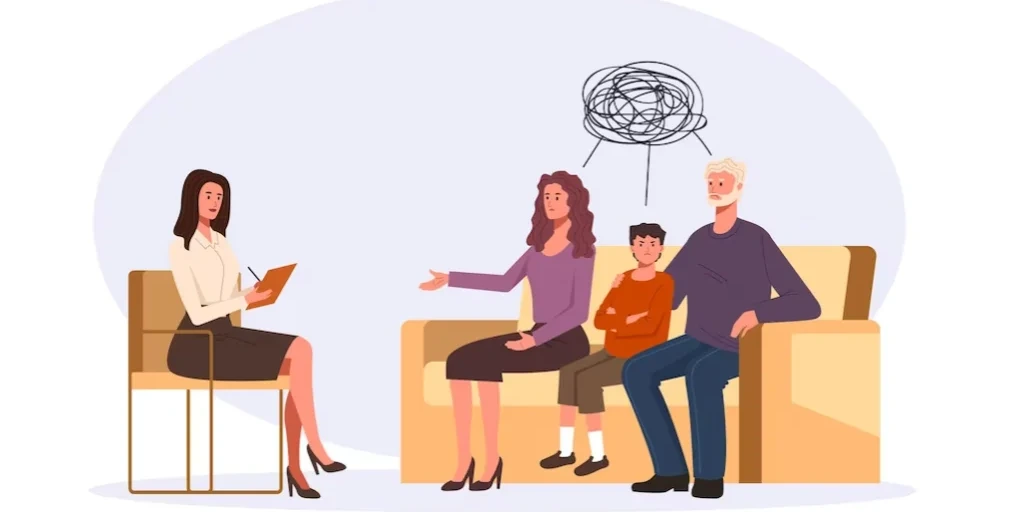




























































































































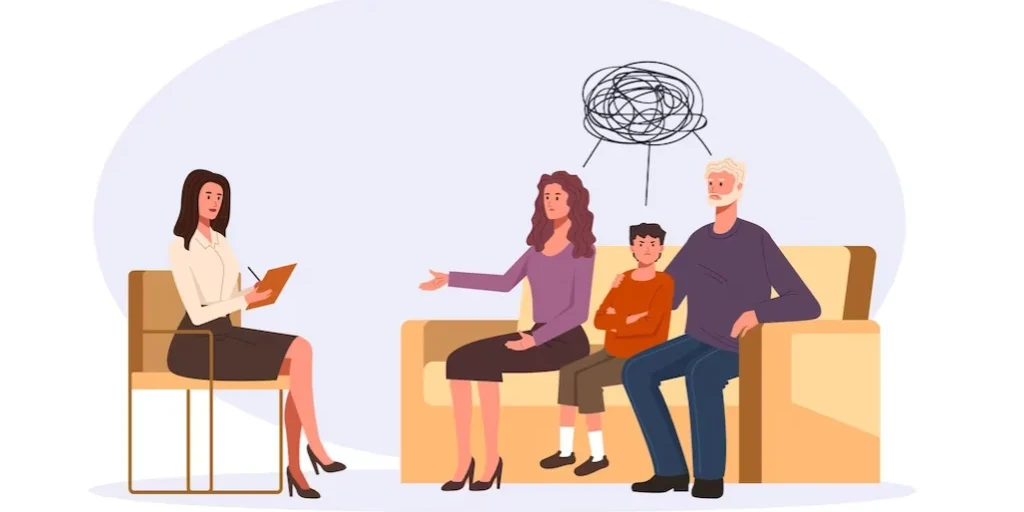






































































































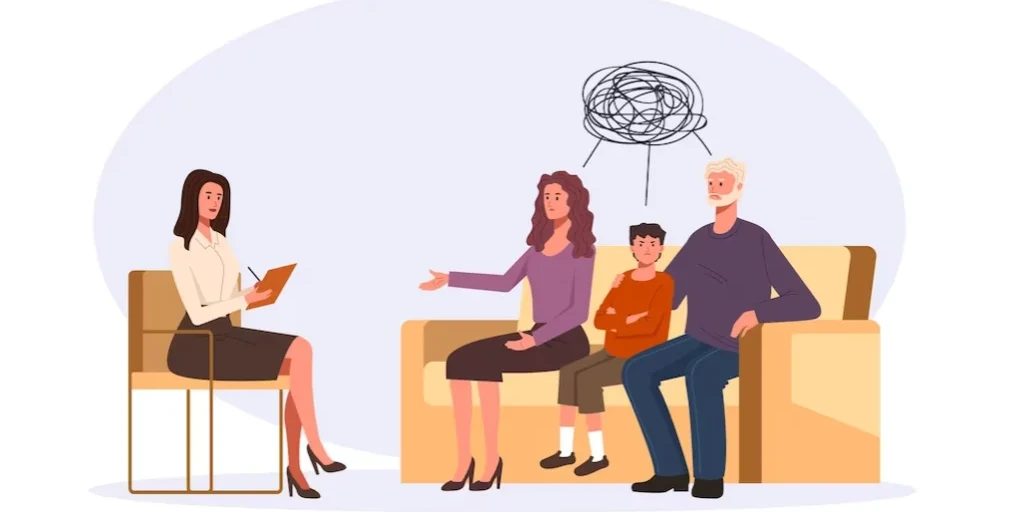

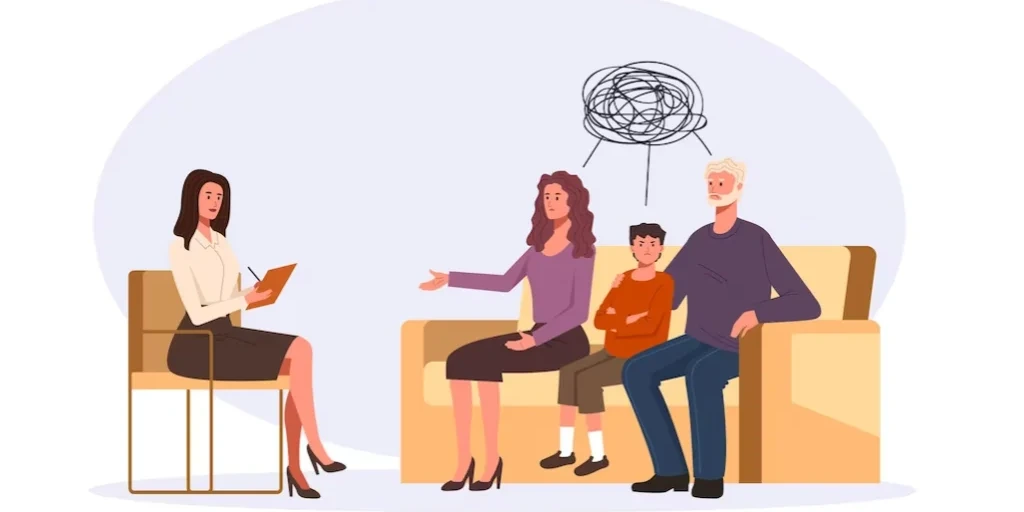




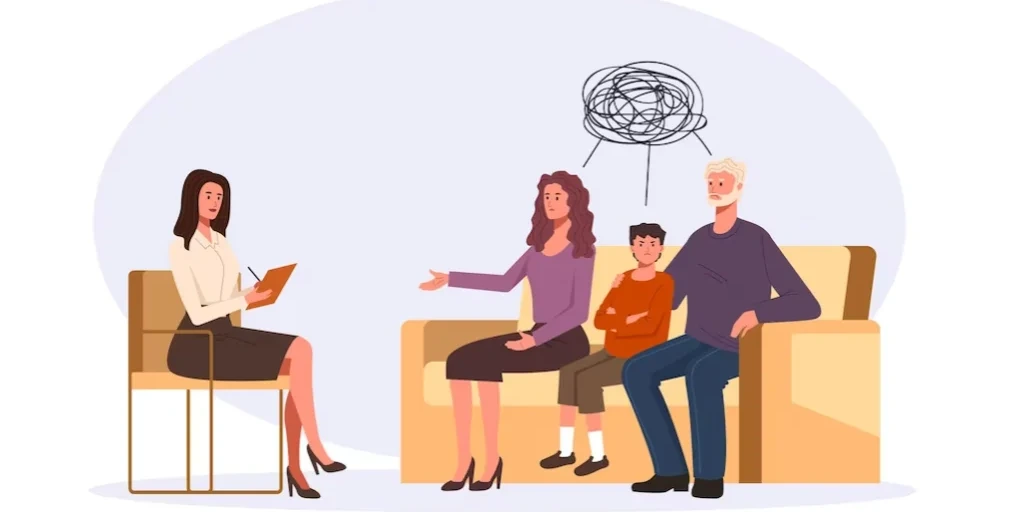
























































































































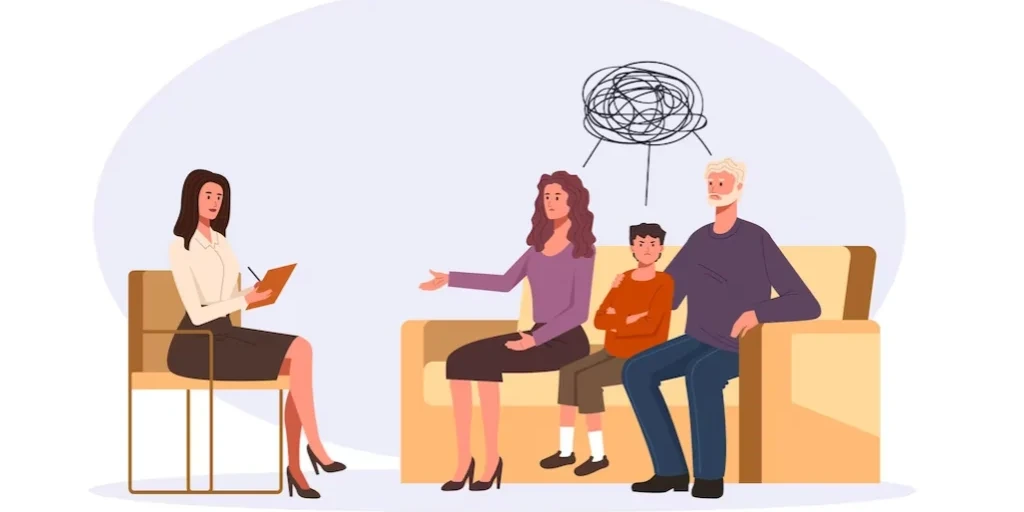














Lincoln Lancaster Child Guidance Center
Lincoln Lancaster Child Guidance Center is a private rehab located in Lincoln, Nebraska. Lincoln Lan...

Whitehall Program
Whitehall Program, located in Lincoln, Nebraska, is a private rehab that specializes in the treatmen...

Creek Counseling
Creek Counseling is a private rehab located in North Platte, Nebraska. Creek Counseling specializes ...

Lutheran Family Services
Lutheran Family Services is a private rehab located in Mccook, Nebraska. Lutheran Family Services sp...

Hampton Behavioral Health and Family Services
Hampton Behavioral Health and Family Services, located in Oneill, Nebraska, provides a wide variety ...

Open Door Missions – Lydia House
Open Door Missions – Lydia House is a non-profit rehab located in Omaha, Nebraska. Open Door Mission...

Healing Circle Community Outreach
Healing Circle Community Outreach is a private rehab located in Franklin, Nebraska. Healing Circle C...

Oxford House
Oxford House is a private rehab located in Grand Island, Nebraska. Oxford House specializes in the t...

Saint Joseph Psychiatric Clinic
Saint Joseph Psychiatric Clinic is a private rehab located in Bellevue, Nebraska. Saint Joseph Psych...

Rainbow Center
Rainbow Center is a private rehab located in Columbus, Nebraska. Rainbow Center specializes in the t...

The Discovery Center
The Discovery Center is a private rehab located in Omaha, Nebraska. The Discovery Center specializes...

Blue Valley Behavioral Health
Blue Valley Behavioral Health is an outpatient treatment facility that provides behavioral health se...

Telecare Corporation – Recovery Center at Sarpy
Telecare Corporation – Recovery Center at Sarpy is a private rehab located in Bellevue, Nebraska. Te...

Advanced Psychiatric Care
Advanced Psychiatric Care is a private rehab located in Kearney, Nebraska. Advanced Psychiatric Care...

AA – Alcoholics Anonymous – Broadway
AA – Alcoholics Anonymous – Broadway is a non-profit rehab located in Scottsbluff, Nebraska. AA – Al...

AlAnon
AlAnon is a non-profit rehab located in Kearney, Nebraska. AlAnon specializes in the treatment of al...

McCook Heartland Counseling and Consulting Clinic
McCook Heartland Counseling and Consulting Clinic, located in Mccook, Nebraska, provides alcohol and...

New Beginnings Therapy Associates
New Beginnings Therapy Associates is a private rehab located in North Platte, Nebraska. New Beginnin...

Adlerian Center
Adlerian Center is an outpatient rehab located in Omaha, NE. Adlerian Center specializes in the trea...

Journeys
Journeys is a private rehab located in Omaha, Nebraska. Journeys specializes in the treatment of alc...

Heartland Family Service
Heartland Family Service is a private rehab located in Papillion, Nebraska. Heartland Family Service...

AA – Alcoholics Anonymous – West Madison Avenue
Alcoholics Anonymous - West Madison Avenue is an international fellowship of men and women who have ...
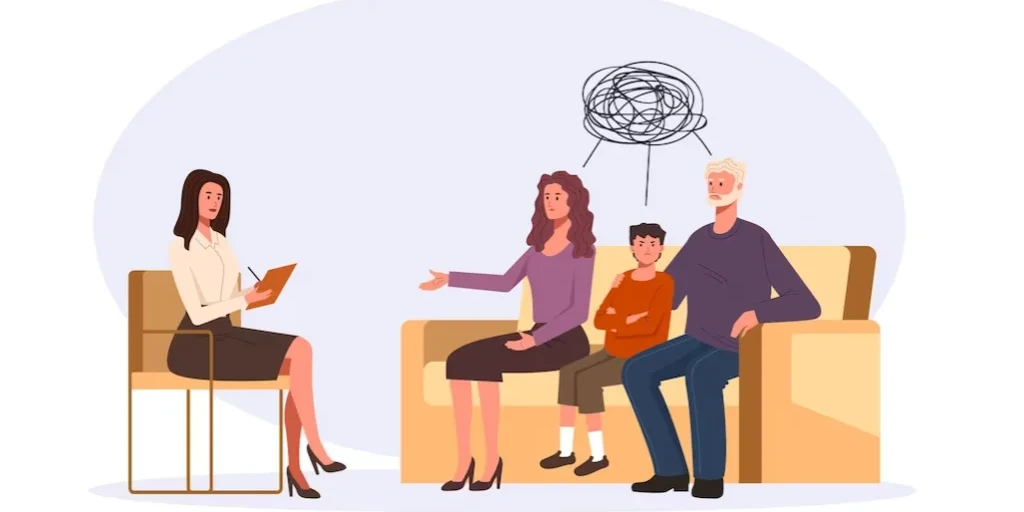
Nebraska Mental Health Centers
Nebraska Mental Health Centers offer comprehensive services for those individuals from all ages who ...

Panhandle Substance Abuse Council
Panhandle Substance Abuse Council is a private rehab located in Scottsbluff, Nebraska. Panhandle Sub...

48th Street Club
Omaha Chapter is a non-profit rehab located in Omaha, NE. Omaha Chapter specializes in the treatment...

AA – Alcoholics Anonymous
AA – Alcoholics Anonymous is a non-profit rehab located in Hastings, Nebraska. AA – Alcoholics Anony...

Omaha Tribe Alcohol Program
Omaha Tribe Alcohol Program is a public rehab located in Macy, Nebraska. Omaha Tribe Alcohol Program...

ACCESS Counseling and Disability Services
ACCESS Counseling and Disability Services is a private rehab located in Omaha, Nebraska. ACCESS Coun...

Addiction and Behavioral Health Services
Addiction and Behavioral Health Services is a private rehab located in Omaha, Nebraska. Addiction an...

Santee Health and Wellness Center – HEART Program
Santee Health and Wellness Center - HEART Program is a public rehab located in Niobrara, NE. Santee ...

Start Fresh Recovery
Start Fresh Recovery is a private rehab located in Omaha, Nebraska. Start Fresh Recovery specializes...

Panhandle Health Group
Panhandle Health Group has been serving the western Nebraska community since 1969. Panhandle Health ...

Prairie Hope Counseling
Prairie Hope Counseling is a private rehab located in Hay Springs, Nebraska. Prairie Hope Counseling...

Saint Francis – Alcoholism and Drug Treatment Center
Saint Francis - Alcoholism and Drug Treatment Center is a private rehab located in Grand Island, NE....

Prevention Pathways
Prevention Pathways is a private rehab located in Norfolk, Nebraska. Prevention Pathways specializes...

AA – Alcoholics Anonymous
AA – Alcoholics Anonymous is a non-profit rehab located in Beatrice, Nebraska. AA – Alcoholics Anony...

AlAnon
AlAnon is a non-profit rehab located in Nebraska City, Nebraska. AlAnon specializes in the treatment...

Panhandle Health Group
Panhandle Health Group has been serving the western Nebraska community since 1969. Panhandle Health ...

Human Services – Detox
Human Services – Detox is a private rehab located in Scottsbluff, Nebraska. Human Services – Detox s...

Alano Club
Alano Club is a non-profit rehab located in Omaha, Nebraska. Alano Club specializes in the treatment...

Saint Francis – Alcoholism and Drug Treatment Center
Saint Francis – Alcoholism and Drug Treatment Center is a private rehab located in Broken Bow, Nebra...

El Milagro Del Siglo – Hispano
El Milagro Del Siglo – Hispano is a private rehab located in Scottsbluff, Nebraska. El Milagro Del S...

Nova Therapeutic Community
Nova Therapeutic Community is a private rehab located in Omaha, Nebraska. Nova Therapeutic Community...

Touchstone – Military Road
Touchstone is a private rehab located in Lincoln, NE. Touchstone specializes in the treatment of sub...

The Link – Dual Recovery Program
The Link – Dual Recovery Program is a private rehab located in Norfolk, Nebraska. The Link – Dual Re...

University Drug and Alcohol Program The Center
University Drug and Alcohol Program The Center is a private rehab located in Omaha, Nebraska. Univer...

Northeast Panhandle Substance Abuse Center – NEPSAC
Northeast Panhandle Substance Abuse Center (NEPSAC) provides quality substance abuse services to the...

Houses of Hope
Houses of Hope treats individuals with diagnosed substance use disorders (and possible co-occurring ...

Reilly and Associates
Reilly and Associates is an outpatient rehab located in Omaha NE. Reilly and Associates specializes ...

Richard Young Behavioral Health
Richard Young Behavioral Health is a behavioral health and addiction treatment center for adults and...

Ponca Tribe of Nebraska
Ponca Tribe of Nebraska is a private rehab located in Norfolk, Nebraska. Ponca Tribe of Nebraska spe...

Alano Club
Alano Club is a non-profit rehab located in Grand Island, Nebraska. Alano Club specializes in the tr...

Williams Prepared Place
Williams Prepared Place is a private rehab located in Omaha, Nebraska. Williams Prepared Place speci...

K C Assessments
K C Assessments is a private rehab located in Omaha, Nebraska. K C Assessments specializes in the tr...

New Creations
New Creations is a private rehab located in Omaha, Nebraska. New Creations specializes in the treatm...

Therapy Plus of Madonna Rehabilitation Hospital
Therapy Plus of Madonna Rehabilitation Hospital is a private rehab located in Lincoln, Nebraska. The...

Riggins and Association Counseling Services
Riggins and Association Counseling Services is a private rehab located in Fremont, Nebraska. Riggins...

ABH Addiction and Behavioral Health Services
ABH Addiction and Behavioral Health Services is a private rehab located in La Vista, Nebraska. ABH A...

ABH Addiction Behavioral Health Services
ABH Addiction Behavioral Health Services is a private rehab located in Omaha, Nebraska. ABH Addictio...

Heartland Counseling and Consulting Clinic
Region 6 Behavioral Healthcare is responsible for the planning, developing, funding, monitoring and ...

Peace and Power Counseling
Peace and Power Counseling is a private rehab located in Omaha, Nebraska. Peace and Power Counseling...

AA – Alcoholics Anonymous Meeting
AA – Alcoholics Anonymous Meeting is a non-profit rehab located in Arlington, Nebraska. AA – Alcohol...

AA – Alcoholics Anonymous
AA – Alcoholics Anonymous is a non-profit rehab located in Scottsbluff, Nebraska. AA – Alcoholics An...

Northeast Panhandle Substance Abuse Center – NEPSAC
Northeast Panhandle Substance Abuse Center (NEPSAC) provides quality substance abuse services to the...

AA – Alcoholics Anonymous
AA – Alcoholics Anonymous is a non-profit rehab located in Minden, Nebraska. AA – Alcoholics Anonymo...

Panhandle Health Group
Panhandle Health Group has been serving the western Nebraska community since 1969. Panhandle Health ...

Fellowship House
Fellowship House is a private rehab located in Grand Island, Nebraska. Fellowship House specializes ...

Cross Roads Resources
Cross Roads Resources is a private rehab located in Chadron, Nebraska. Cross Roads Resources special...

Eastern Nebraska Community Action Partnership
Eastern Nebraska Community Action Partnership is a private rehab located in Omaha, Nebraska. Eastern...

Women’s Empowering Life Line
Women’s Empowering Life Line, in Norfolk, Nebraska, is an integrative, 12 step focused drug rehab fo...

AA – Alcoholics Anonymous
AA – Alcoholics Anonymous is a non-profit rehab located in Lincoln, Nebraska. AA – Alcoholics Anonym...

Blue Valley Behavioral Health
Blue Valley Behavioral Health is an outpatient treatment facility that provides behavioral health se...

Abintra Counseling Center
Abintra Counseling Center is a private rehab located in Omaha, Nebraska. Abintra Counseling Center s...

North Central Rehabilitation
North Central Rehabilitation is a private rehab located in Omaha, Nebraska. North Central Rehabilita...

Rainbow of Hope Community Support
Rainbow of Hope Community Support is a private rehab located in Bellevue, Nebraska. Rainbow of Hope ...

AA – Alcoholics Anonymous
AA – Alcoholics Anonymous is a non-profit rehab located in Fremont, Nebraska. AA – Alcoholics Anonym...

AA – Alcoholics Anonymous – Dodge Street
AA – Alcoholics Anonymous – Dodge Street is a non-profit rehab located in Omaha, Nebraska. AA – Alco...

AA – Alcoholics Anonymous
AA – Alcoholics Anonymous is a non-profit rehab located in Blair, Nebraska. AA – Alcoholics Anonymou...

Hastings Area Council on Alcohol
Hastings Area Council on Alcohol is a private rehab located in Hastings, Nebraska. Hastings Area Cou...

CenterPointe – Outpatient
CenterPointe – Outpatient is a private rehab located in Lincoln, Nebraska. CenterPointe – Outpatient...

ARCH O’Hanlon
ARCH O'Hanlon (Alcoholics Resocialization Conditioning Help) is a private, nonprofit Nebraska Corpor...

First Step Recovery and Wellness
First Step Recovery and Wellness is a private rehab located in Lincoln, Nebraska. First Step Recover...

Lincoln Council on Alcoholism
Lincoln Council on Alcoholism is a private rehab located in Lincoln, Nebraska. Lincoln Council on Al...

Childrens Behavioral Health
Childrens Behavioral Health is a private rehab located in Omaha, Nebraska. Childrens Behavioral Heal...

South Central Behavioral Services – Able House
South Central Behavioral Services – Able House is a private rehab located in Hastings, Nebraska. Sou...

Antlers Center
Antlers Center is a private rehab located in Lincoln, Nebraska. Antlers Center specializes in the tr...

Oxford House – Grand Island
Oxford House – Grand Island is a private rehab located in Grand Island, Nebraska. Oxford House – Gra...

Columbus Rescue Mission
Columbus Rescue Mission is a facility located in Columbus, NE. Columbus Rescue Mission offers treatm...

Sheepgate – Mens Re-Entry Campus
Sheepgate – Mens Re-Entry Campus is a non-profit rehab located in Omaha, Nebraska. Sheepgate – Mens ...

Beneficial Behavioral Health Services
Beneficial Behavioral Health Services is a private rehab located in Omaha, Nebraska. Beneficial Beha...

Lutheran Family Services – Partners in Empowerment and Recovery
Partners in Empowerment and Recovery (PIER) is a collaboration of CenterPointe and Lutheran Family S...

Adlerian Counseling and Training
Adlerian Counseling and Training is a private counseling clinic located in Norfolk, NE. Adlerian Cou...

Addiction & Recovery Services
Addiction & Recovery Services offers counseling for clients experiencing Addiction and/or Mental Hea...

In Harmony Counseling
In Harmony Counseling is a private rehab located in Omaha, Nebraska. In Harmony Counseling specializ...

Heartland Rehabilitation Services
Heartland Rehabilitation Services is a private rehab located in Omaha, Nebraska. Heartland Rehabilit...

Heartland Counseling Services – East 1st Street
Heartland Counseling Services - East 1st Street is a non-profit who provides mental health and subst...

Grove Rehabilitation Services
Grove Rehabilitation Services is a private rehab located in Omaha, Nebraska. Grove Rehabilitation Se...

Rehabilitation Partners – L Street
Rehabilitation Partners – L Street is a private rehab located in Omaha, Nebraska. Rehabilitation Par...

Faith Regional Behavioral Health
Faith Regional Behavioral Health is a private rehab located in Norfolk, Nebraska. Faith Regional Beh...

The Bridge
The Bridge is a non-profit rehab located in Hastings, Nebraska. The Bridge specializes in the treatm...

AA – Alcoholics Anonymous
AA – Alcoholics Anonymous is a non-profit rehab located in Milford, Nebraska. AA – Alcoholics Anonym...

Blue Valley Behavioral Health
Blue Valley Behavioral Health is an outpatient treatment facility that provides behavioral health se...

AA – Alcoholics Anonymous
AA – Alcoholics Anonymous is a non-profit rehab located in Kimball, Nebraska. AA – Alcoholics Anonym...

Saint Francis – Alcohol and Drug Treatment Center
Saint Francis – Alcohol and Drug Treatment Center is a private rehab located in Kearney, Nebraska. S...

AA – Alcoholics Anonymous
AA – Alcoholics Anonymous is a private rehab located in Saint Paul, Nebraska. AA – Alcoholics Anonym...

Nebraska Mental Health Centers
Nebraska Mental Health Centers offer comprehensive services for those individuals from all ages who ...

ABH Addiction & Behavioral Health Services
ABH Addiction & Behavioral Health Services is a private rehab located in Omaha, Nebraska. ABH Addict...

Faith Regional Health Services Behavioral Health
Faith Regional Health Services Behavioral Health is a private rehab located in Norfolk, Nebraska. Fa...

Community Rehabilitation
Community Rehabilitation is a private rehab located in Omaha, Nebraska. Community Rehabilitation spe...

South Central Behavioral Services
South Central Behavioral Services (SCBS) is a Community Behavioral Health agency providing mental he...

Central Nebraska Council
The Central Nebraska Council on Alcoholism and Addictions is located in Grand Island, Nebraska. The ...

Living Water Rescue Mission
Living Water Rescue Mission is a rehab facility located in York, NE. Living Water Rescue Mission off...

Bicycle Health – Nebraska
Bicycle Health - Nebraska is an online Medication Assisted Treatment Program. Bicycle Health - Nebra...

Blue Valley Behavioral Health
Blue Valley Behavioral Health is an outpatient treatment facility that provides behavioral health se...

Next Step
Next Step is a private rehab located in Omaha, Nebraska. Next Step specializes in the treatment of a...

Blue Valley Behavioral Health
Blue Valley Behavioral Health is an outpatient treatment facility that provides behavioral health se...

AA – Alcoholics Anonymous – New Hope Group
AA – Alcoholics Anonymous – New Hope Group is a non-profit rehab located in Scottsbluff, Nebraska. A...

Good Life Counseling
Good Life Counseling is a private rehab located in Oneill, Nebraska. Good Life Counseling specialize...





































































































































































